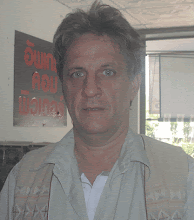Mae Moh and Prayaprai teas - assam and oolong



Doi Mae Salong made a name for itself in tea a while ago, and as a result has become pricy. Teas from nearby Prayathai and Mae Moh are similar in all ways, but much less costly! Not long ago, Doi Mae Salong was called Santikiri, and was home to the 5th Army of the KMT. Prayathai, right on the border, was slower to modernize. One of my wife’s close neighbors in Mae Moh lost half a leg (to the knee) to a land mine not so long ago. The area still receives immigrant refugees, and is heavily tribal. There are Chinese (Jeen Haw descendents of Islamic traders), Lahu, Akha, and Tai Yai (Shan), predominantly, with many other peoples nearby. Until Thai Rak Thai political party’s War on Drugs just a few years ago, opium and amphetamines were still common. They’e gone now, but that leaves tea as the only earner; without tea most locals would be reduced to bare subsistence farming. Many live in houses of bamboo with grass roofs; one old lady I know has mud walls. Most floors are dirt, but with cash economy moving in, motorcycles are common and pick-up trucks hardly rare. Roads are being improved, kids are getting more education, and health and wellbeing increasing. Unfortunately, people in Mae Moh and Prayathai still lack much in the way of marketing skills!
The teas are Oolong and Assam; oolong is much more expensive. Both are graded by a local Chinese tea expert. The finest of quality usually goes to Korea and Japan. Cardboard box packaging also has grades, but only two. There are four sizes of box (100, 200, 300 and 500 gram), two sizes of vacuum packed ‘bales’ (20 and 30 kilos), three qualities of assam tea and four of oolong available from Choui Fong Company, winner of a Good Manufacturing Award and OTOP 5 Star Product Champion. For within Thailand, a greater variety of alternatives is available.
Assam ‘dust’ starts at B90/kilo; high quality green tea can be as low as B200/kg. Grade A Oolong is B1000/kg (it’s B1400 from Mae Salong!). This is rolled tight until it looks like little buds. There is Oolong #12, Oolong gan ong, ching ching oolong and $ seasons. Shipping can be free, to the right customer. The teas are delicious hot or cold.
Oolong Brade B is B800/kilo,grade C 5 to 600 (wet season tea is cheaper); for 100 kilos top shelf is B800, B 700, C 500, D 400 and dust B200. Packing in the small cardboard boxes is B20/kg for labor, B30 for materials (depending some, I assume, on size and quantity). Rainy season tea, unpackaged, is sold as low as B80/kg. These prices are not set in stone, but are what was quoted to me on my recent visit, in early April 2006.
Caffeine, I've read, is an alkaloid useful to jungle plants for keeping insects at bay, thus a kind of insecticide!~
My "virtual store" at http://mythorelics.vstore.ca no longer exiests for lack of visits (not my choice, but what happened).

